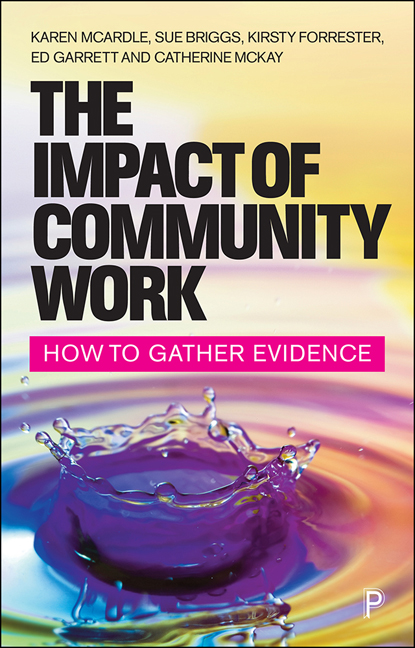11 - Social Impact Studies
Published online by Cambridge University Press: 10 March 2021
Summary
‘We need to stop investing in activities that don't make a difference and start investing in activities that do.’ (Social return on investment consultant)
Introduction
Showing evidence of social impact is nothing new for those working in and with communities; the social is what we have always been interested in. However, the process and profile of this way of showing evidence has changed in recent years. Expectations of corporate social responsibility on the private sector, to demonstrate its social as well as its financial value, through some process of social impact measurement, have translated to demands from funders, investors and commissioners for more robust ways of capturing social impact, from those working in the public and third sectors (Arvidson and Lyon, 2014). The measurement of social impact therefore has become closely associated with approaches such as social accounting and social return on investment, which have this apparent rigour. Although such approaches can be valuable, there are other ways of showing evidence of social impact that may be more familiar to practitioners working in the community.
Some definitions
Before going on to consider some of these approaches, let us make clearer what social impact measurement involves. First, of course, it considers impact. As the introduction to this book explains, impact is about change and, more specifically, it is about the effects of the activity that brings about this change. This understanding suggests a clear link of attribution between the activity and the impact. However, this understanding does not seem to be universally used and the distinction between impacts and outcomes in particular seems to be a matter of debate (or more likely confusion) (Maas, 2009). There is no need to be too worried about this and certainly no need to get bogged down in trying to establish common understandings. You should just be aware that certain funders, commissioners and others may have varied understandings of the term impact.
Second, stakeholders consider the social dimension of impact. The social here means not only groups and communities but also individuals.
- Type
- Chapter
- Information
- The Impact of Community WorkHow to Gather Evidence, pp. 179 - 196Publisher: Bristol University PressPrint publication year: 2020

